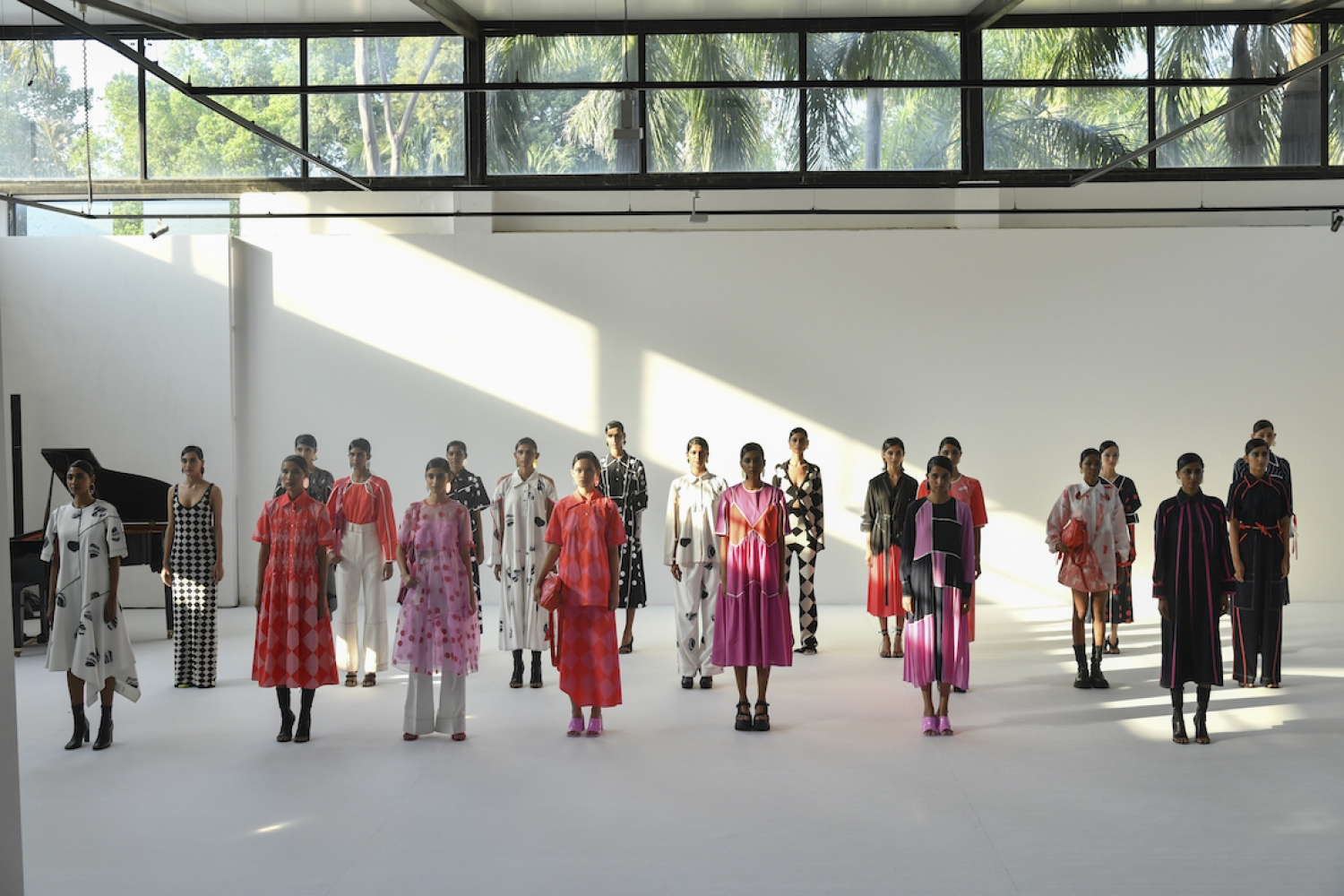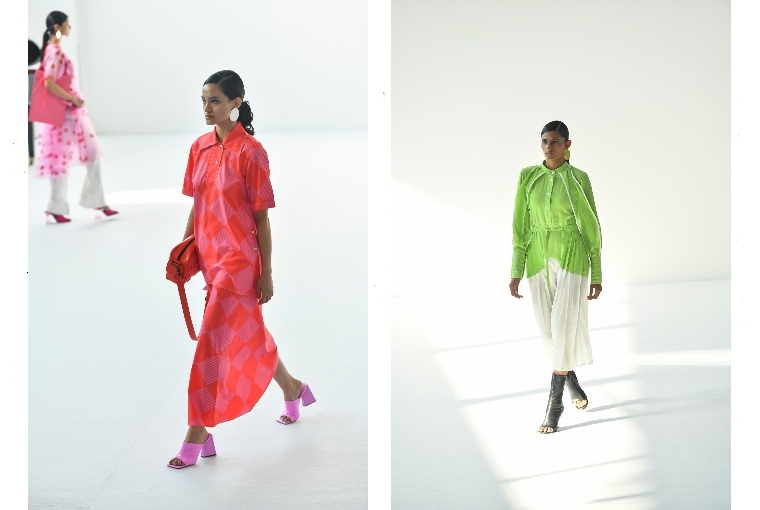

Creative Director Gursy Singh, one half of the homegrown label Lovebirds is taken aback when I ask him to recall his first memory of textiles. It’s not something he’s given any actual thought to but he goes on to visually describe his grandmother’s quilt, stitched and hand crafted to perfection. Amrita Khanna, the other half of the label, grew up surrounded by silk in Assam. Her mother would constantly bring home fabric to cut and make use of it in all ways possible from doll dresses to her own dresses. Little Amrita was not only fascinated by fabric but also inspired by her mother and the work she did. Her childhood experiences resonated which helped her develop a highly creative outlook. We’re in conversation with Amrita and Gursy who tell us all about their recently launched Summer collection which is a nostalgic homage to all things summers.
Gursy: We as a brand picked up our inspiration from architecture and graphics because I'm actually not from a fashion background at all. I come from a design and a graphic background. So I think our greatest stimulus has come from travel, from graphics, from architecture, from very famous art moments. Right. I think since this pandemic hit us last, we have all tried to look inwards. And look more around us. And I think our initial goal was to actually bring out the essence of the Indian summer.
We actually started working on the first things that we started doing this way before making the collection: finding those cues, which were very special to us and our creative team. So someone said, you know how I love the trees in the summer in Delhi and how they bloom. Someone even talked about those beautiful landscapes, when we actually take a car and go to the mountains. Or just the fact that refreshing Nimbu or things like this. So I think we took these inspirations. We definitely evolved from this first thought over a period of time. Also, we started developing this collection, I think last year in September. And also just coming out of your comfort zone after the pandemic, we definitely wanted to bring a very positive attitude, a very, the uplifting mode, especially after all that we've been through. So the idea was to bring nostalgia to people and bring happiness to people.
Take us through your colour palette for the season.
Gursy: There is a very strong coral color, which is very, very new to Lovebirds. We actually have always been a brand which has used mostly muted tones. But this time we went out and explored colors. There Is a very vibrant coral and a very vibrant neon. The prints are also like on our white base, which made spring pop out so much.
Take me through the creative process for this collection.
Amrita: See, it all starts with the thought we always start with, what is the mood and the thought of the collection. Then it moves on to, we usually start with what we are very for, especially for the summer, we really focus on our graphic prints. We have had a bank of prints that we developed each year. So we try to fit in what works or we create new, new graphic prints for us. Then I think it goes into finding special fabrics, newer fabrics. We always try to bring a new fabric into our collection. So then it goes into the color story, right. That takes a long time for us. We really have this natural affinity to move towards Navy blues and blues stones. So then that's a very long exercise for us.
Gursy: We really work on developing the new fabric. Also, you see lots of new patterns. We try to push some boundaries in that. Just bringing lots of new patterns and back and forth on fits. So for this year, I think making also took a long time because there are lots of new fits, which we've never done before. We have sized down a lot of go for much younger, new age millennial professionals who have an outlook towards fashion.

How do Amrita and Gursy work together?
Amrita: Actually, we have a very great balance. We've always looked after different sides of the business. Gursy comes from a more you know, creative side. Whereas I look after the business as well. We have a great balance between us, you know,
Gursy: Even if I do the creative, nothing goes out without her approval, also considering that she has a great final sense of how it's gonna look on a woman. And I might just miss that point that this is not for the body that we feel that it should be for. So she has a very good judgment for that.
Also talking about the brand as a whole, how do you think you guys have evolved since you started out and where do you see yourselves going in the future?
Gursy: I think the one thing that we have always really done is to evolve. Our customers, it's amazing when they come and say that every collection that we are buying into is an evolved version of what we had. We also try to bring something new, but it's also very natural for us to evolve because both of us, as people, are also trying to do something more than what we've done before. We try to bring out a better solution in design or bring out a new feel for our customers. We are always endeavoring to bring more sustainability. Which is not a hundred percent there for us of course at the moment. But I think it's a journey. We're also now trying to understand our women better. It's been a journey from when we started and to how we have a great understanding of what they wear and where they wear it.
Amrita: I think that has also come through after we opened a store, which was last year. We felt that that understanding of women through that direct contact that we had to the customer and that really made us understand our product better.
What do you think the fashion of now should look like?
Amrita: It's not a simple question. For me, I think comfort, fashion should always be comfortable. It's not about trends anymore. I think the pandemic has taught us, it's season less. People don’t care about when they're doing a show, which show they're doing. You are creating something and that matters. Also, I think there's a lot of onus on the fashion industry. It’s important for fashion to be more seasonless for the environment. It should be about quality driven business rather than fast fashion
Gursi: And also we have always respected a women's body as it was, as it is. And we have always promoted all ages and all sizes. So I think even going forward it should be an even bigger movement, to empower consumers to embrace themselves. I think these are the social factors that definitely define how the future of fashion is going to look like.
Date 11-03-2022